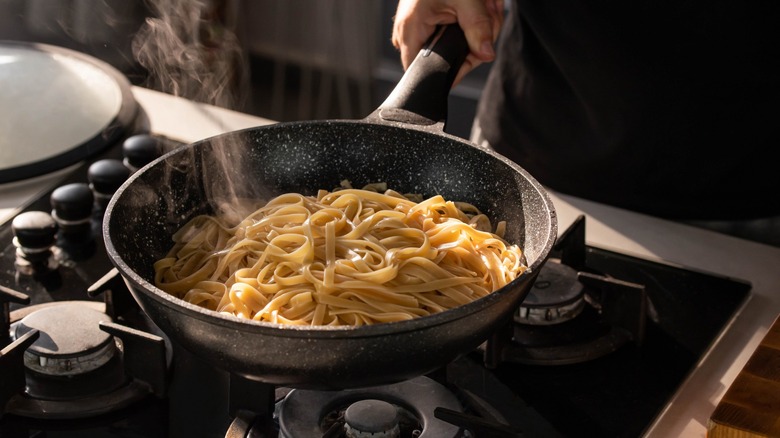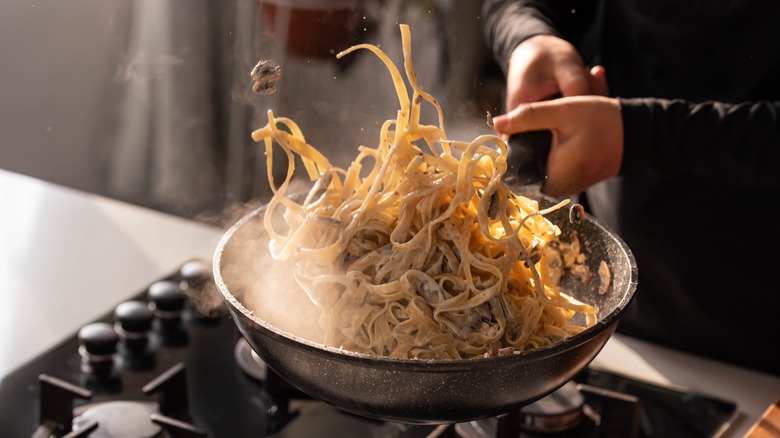Boil Noodles In A Shallow Pan For A Time-Saving Pasta Hack
When it comes to cooking pasta, the traditional method often involves a large pot of boiling water and a considerable amount of waiting time. However, a simple yet effective hack can improve this conventional method — boiling noodles in a shallow pan. This innovative approach involves using a wide, low-depth pan instead of a deep pot. The technique is beneficial for two primary reasons.
First, it requires much less water, just enough to cover the pasta. With less water to heat, it reaches boiling point more quickly, thus reducing the overall cooking time. Furthermore, with less water to heat, less energy is consumed, making it a sustainable choice for environmentally conscious cooks. The reduced volume of water also results in a starchy, concentrated liquid perfect for making sauces, unlike in traditional large-pot cooking where most of the starchy goodness is lost as it gets diluted in a large volume of water and subsequently drained away.
The process of cooking pasta in a shallow pan is straightforward. Choose a pan wide enough to accommodate the pasta, put the pasta in, add enough cold water to cover it, and bring it to a boil (this is the cold-start method, which saves even more cooking time). As it cooks, stir occasionally to prevent sticking and ensure even cooking. Once ready, reserve some of the pasta water and drain the noodles. But that's not all.
Increase efficiency by using the pan for dual purposes
The shallow pan pasta hack not only saves time in cooking but also simplifies the entire process of making a pasta dish, from cooking to clean-up. After boiling and draining the pasta in the shallow pan, the same pan can be used to prepare your pasta sauce, eliminating the need for multiple pots and pans. Once the sauce is ready, whether it's a simple garlic butter sauce or a more complex marinara or cream sauce, the cooked pasta can be tossed back into the pan, ensuring that every strand is evenly coated with the sauce. This also allows for better integration of flavors as the pasta reabsorbs some of the sauce, making the dish more cohesive and flavorful.
The practical benefits of this method are significant. It simplifies the cooking process, making it more approachable for novice cooks or those short on time, and makes clean-up a breeze since you only have one pan to clean. Plus it reduces water usage for cleaning, aligning with sustainable kitchen practices. So, the next time pasta is on your dinner menu or comes as a last-minute thought, just grab your shallow pan and whip up a delectable dish in no time.

